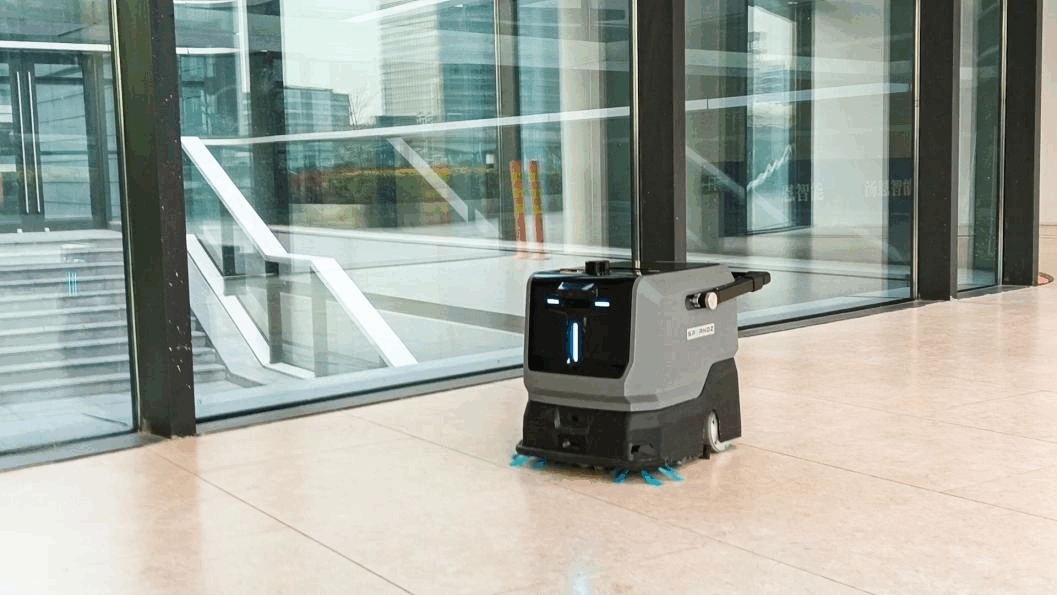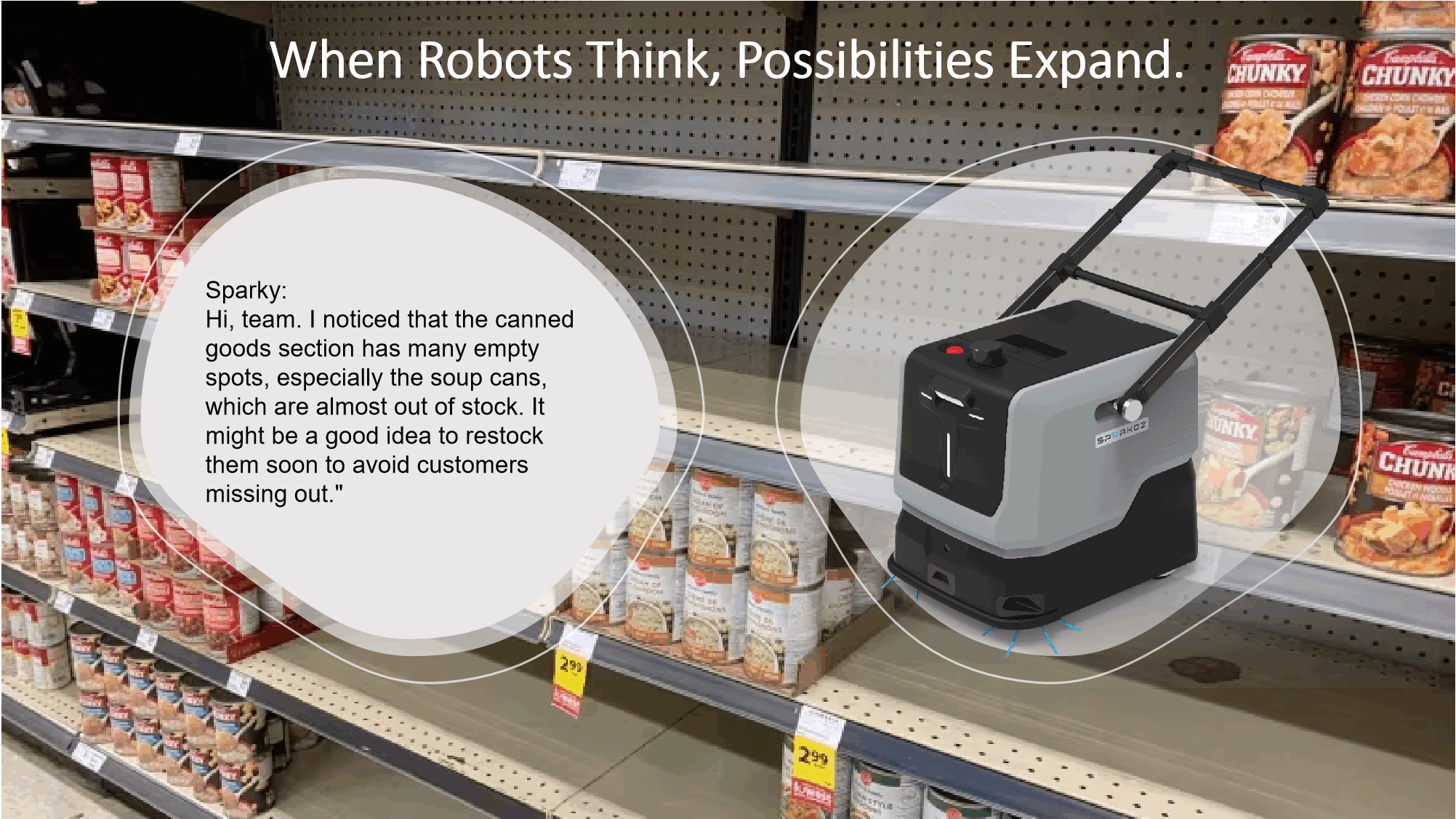Ensuring clean floors in commercial settings is crucial for promoting health, safety and efficiency. Conventional cleaning approaches often follow predetermined schedules and paths, which may not be effective when unexpected messes or obstacles arise. Adaptive intelligence offers a solution by enabling cleaning systems to adjust and respond to changing conditions in real-time. This dynamic approach not only improves cleanliness but also enhances overall operational effectiveness in large commercial environments.
Sparkoz's TN10 robotic floor scrubber represents a shift from pre-programmed automation to situational awareness and real-time decision-making. It's not just cleaning — it's learning as it goes.

How TN10 Understands Its Environment?
Unlike conventional cleaning robots, the Sparkoz TN10 is equipped with an AI core that enables continuous environmental learning. Instead of just reacting to basic inputs — it's actively interpreting the space around it.
Through a combination of 3D LiDAR, optical sensors, and onboard computing, the TN10 can recognize unusual floor conditions (e.g., wet footprints, food spills...), temporary obstacles such as carts, packaging, or equipment and shifts in traffic density over time.
See the TN10's situational awareness in action: https://youtu.be/eL4FAEYVrws?si=YldU8yrWvO2LOb3O
When it detects a change, it adapts, modifying cleaning patterns adjusting cleaning intensity, or rerouting entirely if needed. That adaptability proves crucial in dynamic spaces like airports, shopping malls, or large office buildings, where conditions can change hour by hour.
More Than Just a Schedule
One of the key features of TN10's system is self-prioritization. Instead of sticking to a fixed cleaning plan, the TN10 constantly reassesses which areas need attention most urgently. To name a few:
l During peak foot traffic, TN10 may focus on main walkways and entrance zones.
l If a low-traffic area becomes available, it reallocates resources there.
l If the cleaning tank is nearing empty, it schedules a refill stop before it becomes an issue.

When TN10 think
The result? Reduced downtime and minimizes the need for manual intervention. Facilities managers no longer need to constantly monitor robot operations — the robot makes informed decisions on its own.
Human-Machine Collaboration
While TN10 is built to operate autonomously, it's also designed to work alongside human teams. The robot can send notifications — like alerts about detected spills or maintenance needs, sent directly to a dashboard or app in real time.
It also stores and shares actionable data, such as:
l Area coverage statistics,
l Predictive maintenance alerts (e.g., component wear or water tank usage),
l Logs for compliance or auditing purposes.
This data flow transforms the TN10 into a valuable part of the cleaning team, giving managers the insights to optimize staff deployment and resource allocation.
What's the Impacts?
In field applications, the TN10 has demonstrated significant efficiency gains, particularly in complex environments where cleaning needs fluctuate throughout the day. Unlike robots that follow a set route regardless of actual conditions, TN10 adjusts itself based on use patterns and environmental triggers.
This means:
l Fewer missed spots during busy hours,
l Better coverage of problem areas (like food courts or restrooms),
l Reduced redundancy — no more cleaning already-clean zones.
Combined with its quiet operation and modular maintenance design, TN10 is well-suited to environments where disruption needs to be minimized.
Why Adaptive Cleaning Matters Now
Modern facilities are expected to meet higher hygiene standards while operating with leaner teams and tighter schedules. A robot like the TN10 — which learns over time, adapts to new layouts, and integrates with smart building systems — fits naturally into this evolving landscape.
It also offers a long-term benefit: as the robot encounters different scenarios, its performance gets better. Over time, it builds a kind of operational memory that helps it predict high-traffic periods, optimize cleaning routes, and even recognize recurring mess patterns.
Ultimately, the TN10 represents more than just a cleaner. It's part of a broader movement toward autonomous, insight-driven facility management — where machines support human teams through reliable data and adaptive behavior.
As public expectations for cleanliness and safety grow, AI-enabled robots like TN10 provide a scalable, responsive, and sustainable solution. Not with flashy features, but its performance gets smarter and more efficient with every shift.